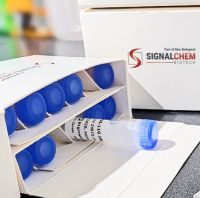Immunofluorescence Methods in Studies of the GTPase Ran and Its Effectors in Interphase and in Mitotic Cells
互联网
456
The GTPase RAN, the regulators of its nucleotide-bound state, and its effectors represent a specialized network in the RAS
GTPase superfamily and regulate the localization of macromolecules (RNAs and proteins) in subcellular compartments in interphase
cells and at the mitotic apparatus when cells divide. Essential cell cycle processes, e.g., replication, repair, transcription,
export of transcribed RNAs out of the nucleus, assembly of the mitotic apparatus, kinetochore function, chromosome segregation,
nuclear reorganization, and rebuilding of the nuclear envelope and nuclear pores at mitotic exit, ultimately depend on RAN’s
ability to orchestrate localization of key target factors in space and time. To achieve this, RAN network members acquire
themselves dynamic localization patterns. Biochemical fractionation protocols describe where the bulk of RAN network members
localize. Immunofluorescence methods have revealed more subtle and complex patterns, with specific populations of RAN network
components associating with cellular structures, or organelles, where they play crucial roles as spatial regulators for a
large set of macromolecules. These localization studies are important to understand RAN modes of action and to identify new
targets of RAN control. Here we describe methods for the visualization of RAN network members and effectors in mammalian cells.









